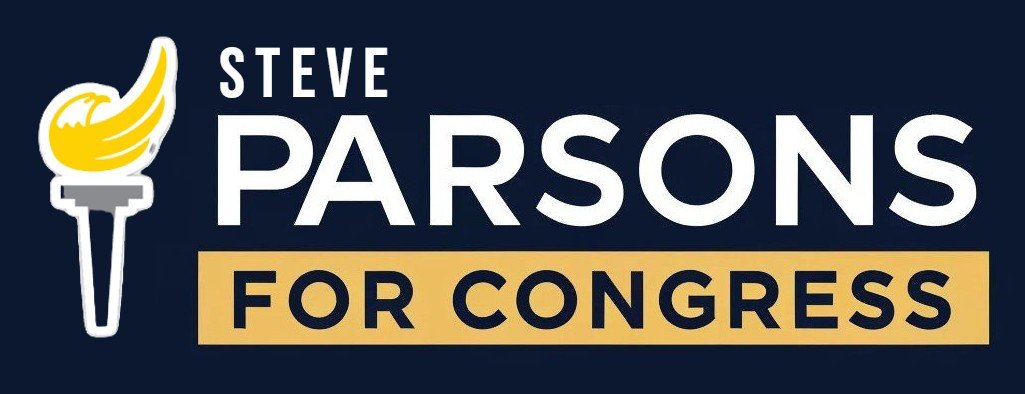Reforming the Federal Reserve
by Steve G. Parsons, Ph.D.
Some suggest simply abolishing the Federal Reserve and perhaps returning to the gold standard. And while we could debate such an approach, there is little support for full abolishment of the Fed. Fortunately, there are fundamental changes to the Federal Reserve that would greatly improve the institution – short of abolishing it. First consider the background of the Fed.
Conflicting and Unattainable Goals. The Federal Reserve Act was signed into law by President Woodrow Wilson in December of 1913, it was amended in 1977 to require the Fed "to promote effectively the goals of maximum employment, stable prices, and moderate long-term interest rates." Unfortunately, these are conflicting goals; neither the Fed nor any other government entity can effectively meet these goals. Indeed, the Cato Institute Policy Report in 2022 stated “… the current economic situation provides a stark example of why central banks should not be tasked with managing the economy at all.” (Available at What Should the Fed (and Congress) Do Now? | Cato Institute)
Smoke and Mirrors. The Board of Governors of the Federal Reserve System correctly notes that the Fed does not purchase new Treasury securities, but it then claims: “Federal Reserve purchases of Treasury securities from the public are not a means of financing the federal deficit.” (Available at The Fed - How does the Federal Reserve's buying and selling of securities relate to the borrowing decisions of the federal government?)
This statement is highly deceptive at best; when the Fed makes those purchases it owns Treasury securities and thereby holds part of the debt of the United States. This can be seen at the website of the Fed of St. Louis showing that in January 2020 (before the pandemic) the Fed had $4.17 trillion in assets. These are primarily Treasury securities. That is, one branch of the federal government (the U.S. Treasury) owes another branch of the government (the Fed) over $4 trillion. If your instincts tell you this is smoke and mirrors – your instincts are correct. But it gets worse, by May of 2020 (four months later) the Fed had over $7 trillion in assets. Federal government spending for the pandemic was financed by deficit spending, thereby increasing the national debt. However, this deficit spending was not funded via the public purchasing substantial amounts of new Treasury securities – rather it was financed by the Fed purchasing that debt.
The Fed “Creating Money” out of Thin Air. Typically, when the Fed purchases Treasury securities from the public it “pays” for the securities by creating money out of thin air. Decades ago, we would have said that the Fed was simply printing more money; the effect is very similar. In February 2022 the Washington Post noted “The Fed’s broadest measure of the money supply, called M2, is more than $21.6 trillion today, up from $15.5 trillion in February 2020.” (Or see M2 (M2SL) | FRED | St. Louis Fed (stlouisfed.org)). That is, in two years the Fed increased the money supply by approximately 40%. This was of course possible because the Fed could create money out of thin air to purchase Treasury securities on the secondary market.
An Enabler to Spend-aholics. For those with a substance abuse (or overeating disorder) often there is a friend or family member that enables the bad behavior. In this case it is the Fed – enabling the federal government to deficit spend by paying for it with newly created money. This fuels the growing national debt (which is over now $34.6 trillion according to U.S. National Debt Clock : Real Time (usdebtclock.org)), of which $5.238 trillion is owned by the Fed.
Causing Inflation. In an October 1977 issue of Newsweek, Nobel Prize winning economist Milton Friedman stated: "There is one and only one basic cause of inflation: too high a rate of growth in the quantity of money—too much money chasing the available supply of goods and services. These days, that cause is produced in Washington, proximately, by the Federal Reserve System, which determines what happens to the quantity of money; ultimately, by the political and other pressures impinging on the System, of which the most important are the pressures to create money in order to pay for exploding Federal spending and in order to promote the goal of ‘full employment.’” Friedman’s comments from 47 years ago, still ring true today. If you don’t believe that growth in the money supply drives inflation, you should visit Argentina (as I did earlier this year) where growth in the money supply and inflation have both topped 100% per annum for substantial periods of time.
Changes Needed at the Fed. I consider myself a practical economist (making my living helping companies make business decisions in the face of regulatory constraints), and a practical Libertarian. We can retain the Fed, but key changes are needed. 1) Eliminate the 1977 conflicting and unattainable goals of maximum employment, stable prices, and moderate long-term interest rates. 2) Explicitly eliminate or greatly rein in the Fed’s ability to create money out of thin air. This could be done with a rule-based constraint such as no increase in the money supply greater than the real growth in GDP plus some percentage (perhaps 1%). Other changes are possible, but the Fed’s ability to enable deficit spending by creating money out of thin air must be curtailed. 3) The Fed should focus instead on maintaining banking system solvency and maintaining US trust in the banking system.
A more detailed set of recommendations for fixing the Fed is provided in the Cato Institute’s 2022 Monetary Policy Handbook for Policy Makers. Monetary Policy | Cato Institute. See also, Cato Institute Policy Report, Sept/Oct 2022. What Should the Fed (and Congress) Do Now? Available at What Should the Fed (and Congress) Do Now? | Cato Institute
